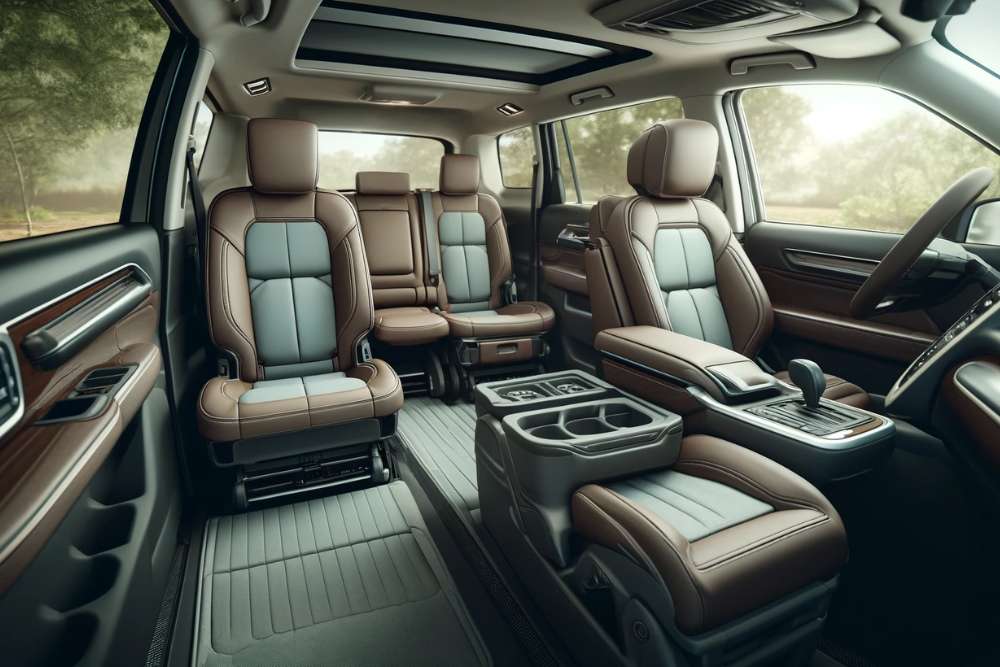Microfiber Upholstery: The Silent Revolution in Automotive Interiors
The world of automotive interiors is undergoing a quiet transformation, and at the forefront of this change is microfiber upholstery. This innovative material is redefining comfort, durability, and style in vehicle cabins across the globe. But what exactly is microfiber, and why is it becoming the go-to choice for discerning car manufacturers and enthusiasts alike?

The Birth of Microfiber: From Lab to Road
Microfiber’s journey began in the 1950s, but it wasn’t until the 1990s that it found its way into automotive applications. Initially developed for industrial cleaning purposes, microfiber’s unique properties quickly caught the attention of car manufacturers seeking to elevate the in-cabin experience.
Composed of ultra-fine synthetic fibers, typically a blend of polyester and polyamide, microfiber is engineered to be significantly thinner than human hair. This microscopic structure gives the material its characteristic softness and durability, making it an ideal candidate for automotive upholstery.
The automotive industry’s adoption of microfiber was gradual but decisive. Luxury car brands were the first to recognize its potential, incorporating it into their high-end models to offer a premium tactile experience. As production techniques improved and costs decreased, microfiber began to appear in a wider range of vehicles, democratizing comfort across various price points.
The Science Behind the Softness
What sets microfiber apart from traditional automotive fabrics is its unique structure at the microscopic level. Each fiber is split into numerous filaments, creating a surface area many times larger than that of conventional materials. This increased surface area is responsible for microfiber’s exceptional ability to trap dust, absorb liquids, and maintain its appearance over time.
The splitting process, known as microfibrillation, is a critical step in microfiber production. It involves treating the fibers with specific chemicals or mechanical processes to create the characteristic star-shaped cross-section. This structure not only enhances the material’s cleaning properties but also contributes to its softness and durability.
The density of microfiber upholstery is another key factor in its performance. With thousands of fibers per square inch, microfiber creates a uniform surface that resists pilling and maintains its appearance even after years of use. This density also contributes to the material’s insulating properties, helping to keep vehicle interiors comfortable in various weather conditions.
Comfort Meets Performance: The Microfiber Advantage
Microfiber’s appeal in automotive applications extends far beyond its pleasing texture. Its performance characteristics make it an ideal choice for the demanding environment of a vehicle interior.
One of microfiber’s most significant advantages is its breathability. Unlike leather, which can become uncomfortably hot or cold depending on the ambient temperature, microfiber maintains a consistent, comfortable feel. This breathability also helps to regulate humidity within the vehicle, reducing the likelihood of fogged windows and creating a more pleasant driving environment.
Durability is another area where microfiber excels. The tightly woven structure of the fabric resists wear and tear, maintaining its appearance even after years of use. This longevity is particularly important in high-traffic areas of the vehicle, such as the driver’s seat and armrests.
Microfiber’s stain-resistant properties are a boon for both manufacturers and vehicle owners. The tight weave and synthetic composition make it difficult for liquids and dirt to penetrate the fabric, allowing for easy cleaning and maintenance. This characteristic is especially valuable in family vehicles or those used for ride-sharing services, where spills and stains are more likely to occur.
Sustainability and the Future of Microfiber
As the automotive industry increasingly focuses on sustainability, microfiber is positioned to play a significant role. While traditionally made from synthetic materials, advancements in production techniques are leading to more eco-friendly options.
Recycled microfiber, made from post-consumer plastic bottles, is gaining traction among environmentally conscious manufacturers. This approach not only reduces the demand for virgin plastics but also helps to address the global issue of plastic waste.
Biodegradable microfibers are another promising development. These materials are designed to break down naturally at the end of their lifecycle, reducing their environmental impact. While still in the early stages of development, biodegradable microfibers represent a potential solution to the long-term sustainability challenges faced by the automotive industry.
The Road Ahead: Innovations in Microfiber Technology
The future of microfiber in automotive applications looks bright, with ongoing research and development promising even more advanced materials. Smart fabrics, incorporating conductive fibers, could turn vehicle seats into interfaces for controlling entertainment systems or monitoring driver health.
Nanotechnology is another frontier in microfiber development. By manipulating materials at the molecular level, researchers are creating fabrics with enhanced properties, such as self-cleaning surfaces or improved thermal regulation.
As we look to the future of automotive interiors, microfiber stands out as a material that balances luxury, performance, and sustainability. Its evolution from a niche product to a mainstream staple in vehicle upholstery is a testament to its versatility and appeal.
The silent revolution of microfiber in automotive interiors is far from over. As technology advances and consumer expectations evolve, this remarkable material will continue to adapt, offering new possibilities for comfort, style, and functionality in the vehicles of tomorrow. Whether you’re cruising in a luxury sedan or zipping around in a compact city car, the chances are that microfiber will be there, quietly enhancing your driving experience.





